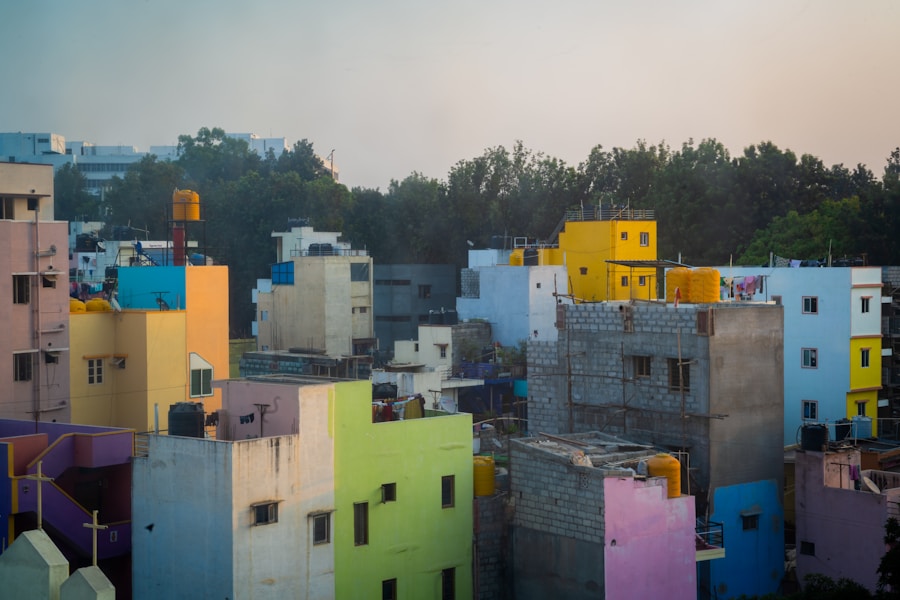Queen Emma Bridge, also known as “The Swinging Old Lady,” is a pontoon bridge located in the heart of Willemstad, the capital of Curaçao. The bridge was named after Queen Emma of the Netherlands and was originally built in 1888. It was designed to connect the two vibrant districts of Punda and Otrobanda, which are separated by the St.
Anna Bay. Initially, the bridge was a toll bridge, but in 1939, it was converted into a free-floating bridge, allowing pedestrians and cyclists to cross the bay without any charge. The bridge has undergone several renovations and reconstructions over the years to maintain its functionality and historical significance.
In 2006, the original bridge was replaced with a modern, floating pontoon bridge that still retains its iconic swinging motion, allowing ships to pass through the bay.
The rich history and engineering marvel of Queen Emma Bridge make it a significant landmark in Curaçao, attracting tourists and locals alike.
Key Takeaways
- Queen Emma Bridge is a must-see attraction in Curaçao, known for its unique design and historical significance.
- The bridge connects the districts of Punda and Otrobanda, playing a crucial role in the city’s transportation and cultural heritage.
- The bridge’s floating pontoon design allows it to swing open to allow ships to pass through, making it a unique and functional piece of engineering.
- Queen Emma Bridge is a symbol of Curaçao’s rich heritage and is a popular spot for tourists and locals alike.
- At night, the bridge becomes a spectacular sight as it lights up, offering a beautiful backdrop for evening strolls and photo opportunities.
Connecting Punda and Otrobanda: Queen Emma Bridge’s Importance
Queen Emma Bridge serves as a vital link between the two bustling districts of Punda and Otrobanda, playing a crucial role in the daily lives of the locals and visitors. Punda, known for its colorful Dutch colonial architecture and vibrant shopping streets, is home to numerous boutiques, restaurants, and historical landmarks. On the other hand, Otrobanda offers a more laid-back atmosphere with its picturesque waterfront promenade and diverse cultural attractions.
The bridge’s strategic location facilitates easy access for pedestrians and cyclists to explore both districts, fostering cultural exchange and economic activity. Its significance as a connecting point is further emphasized by the lively street markets, festivals, and events that take place on either side of the bridge, creating a dynamic and inclusive environment for people from all walks of life.
The Unique Design of Queen Emma Bridge
One of the most distinctive features of Queen Emma Bridge is its unique floating design, which sets it apart from traditional fixed bridges. The bridge consists of a series of pontoons that are interconnected and supported by steel cables, allowing it to swing open horizontally to accommodate maritime traffic entering and exiting the St. Anna Bay. This innovative design not only showcases the engineering prowess of its time but also adds to the allure of the bridge as a captivating spectacle for onlookers. The vibrant colors of the bridge, with its bright blue structure and contrasting red walkway, further contribute to its visual appeal, creating a striking contrast against the backdrop of Willemstad’s pastel-colored buildings. The combination of functionality and aesthetics makes Queen Emma Bridge an architectural marvel that seamlessly integrates with its surroundings while maintaining its practical purpose. For more information, visit TripAdvisor.
Queen Emma Bridge: A Symbol of Curaçao’s Heritage
| Aspect | Details |
|---|---|
| Location | Willemstad, Curaçao |
| Construction | 1888 |
| Length | 168 meters |
| Type | Pontoon bridge |
| Function | Connects Punda and Otrobanda |
| Symbolism | Represents unity and connection |
Queen Emma Bridge stands as a symbol of Curaçao’s rich cultural heritage and historical significance. As an integral part of Willemstad’s UNESCO World Heritage Site, the bridge represents the island’s colonial past and its enduring legacy. The fusion of Dutch and Caribbean influences is evident in the architecture and design elements of the bridge, reflecting the island’s diverse cultural tapestry.
Moreover, Queen Emma Bridge embodies the spirit of resilience and adaptability, having withstood the test of time and natural elements while remaining an iconic emblem of Curaçao’s identity. Its presence serves as a reminder of the island’s maritime legacy and its ongoing commitment to preserving its architectural treasures for future generations to appreciate and cherish.
Queen Emma Bridge: A Spectacular Sight at Night
When night falls, Queen Emma Bridge transforms into a mesmerizing spectacle, illuminated by an array of colorful lights that reflect off the tranquil waters of St. Anna Bay. The bridge’s vibrant hues create a captivating visual display that adds to the enchanting ambiance of Willemstad’s waterfront.
As it swings open to allow ships to pass through, the shimmering lights dance across the bay, casting a magical glow that captivates both locals and tourists alike. The nighttime allure of Queen Emma Bridge extends beyond its visual appeal, as it becomes a focal point for evening strolls along the waterfront promenade. The gentle swaying motion of the bridge, coupled with the serene sounds of the bay, creates a serene atmosphere that invites visitors to immerse themselves in the beauty of Curaçao’s nocturnal charm.
Exploring the Surroundings of Queen Emma Bridge
The vicinity surrounding Queen Emma Bridge offers an array of attractions and activities for visitors to enjoy. From exploring the historic streets of Punda adorned with vibrant murals and quaint cafes to venturing into Otrobanda’s cultural enclaves and waterfront bars, there is no shortage of experiences to indulge in. Additionally, the nearby floating market, where vendors sell fresh produce and local crafts from their colorful boats, provides a unique shopping experience infused with Caribbean flair.
For those seeking panoramic views of Willemstad’s skyline and the iconic Handelskade waterfront, ascending the nearby Riffort or crossing the Queen Juliana Bridge offers breathtaking vistas that capture the essence of Curaçao’s picturesque landscape.
Whether it’s savoring local delicacies at waterfront eateries or delving into the island’s history at nearby museums, the surroundings of Queen Emma Bridge offer a diverse tapestry of experiences waiting to be explored.
Visiting Queen Emma Bridge: Tips for a Memorable Experience
To make the most of a visit to Queen Emma Bridge, it is advisable to time your arrival to coincide with the bridge’s opening, allowing you to witness its impressive swinging mechanism in action. Additionally, exploring both Punda and Otrobanda on foot provides an immersive experience that allows you to soak in the distinct charm of each district while appreciating their architectural splendor. For photography enthusiasts, capturing the bridge against the backdrop of Willemstad’s colorful facades during sunset or at night can result in stunning visual mementos.
Furthermore, engaging with local vendors at the floating market or indulging in authentic Caribbean cuisine at nearby eateries offers an opportunity to savor Curaçao’s culinary delights while interacting with its vibrant community. In conclusion, Queen Emma Bridge stands as an iconic symbol of Curaçao’s heritage and a testament to its enduring legacy. Its historical significance, unique design, and captivating allure make it a must-see attraction that encapsulates the island’s cultural richness and maritime spirit.
Whether admired during daylight or under the enchanting glow of nightfall, Queen Emma Bridge continues to beckon visitors to immerse themselves in its timeless charm and explore the vibrant tapestry of experiences that surround it.









